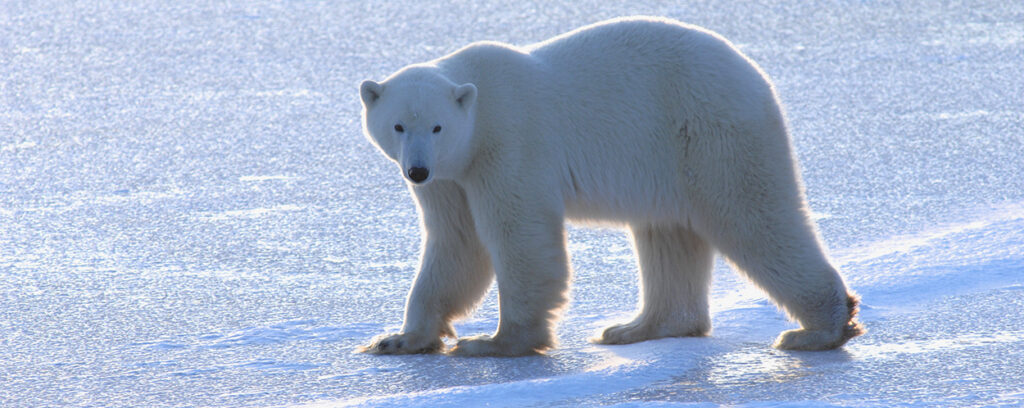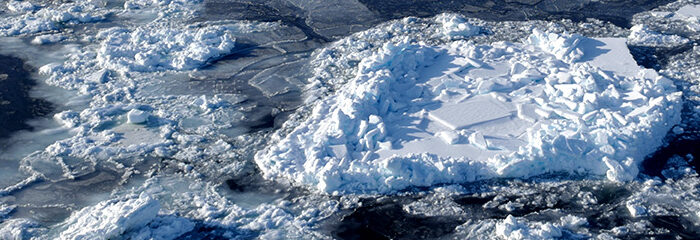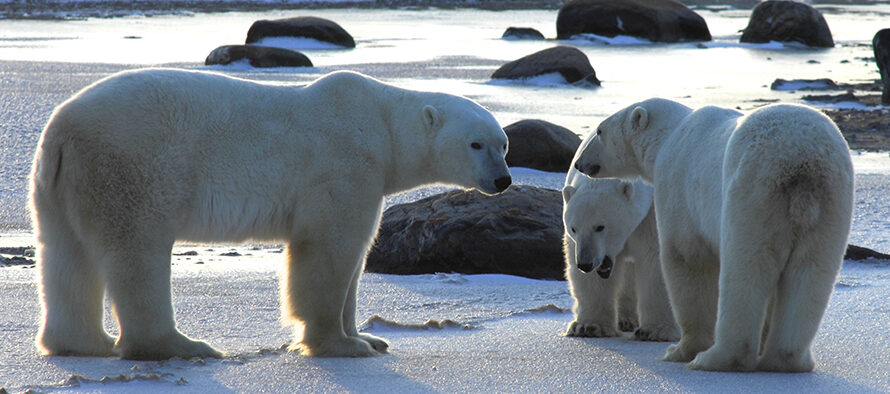Stories Blog / Community Stories / Stories / Donor Stories / Thrive Magazine
Bear Necessities
A new fund helps preserve Arctic wildlife

Dianne Johnstone has always felt drawn to the North. Her vacations haven’t been to tropical beaches or sun-drenched resorts. They have been to snowy landscapes, mountain ranges and the vast, breathtaking Arctic. “That’s where I feel comfortable,” she reflects. Her travels, including a trip to the Arctic Circle last year, inspired something deeper: a desire to protect the unique and fragile Arctic environment and its most iconic inhabitant—the polar bear. “We’ve always had an unbelievable appreciation for these majestic creatures,” Dianne explains.
“They’re powerful, they are so amazingly adaptable to their surroundings. They are the most amazing things I’ve ever watched.”
Dianne and her husband, Peter Wright, have turned their love for the Arctic into a lasting legacy by establishing the Johnstone-Wright Polar Bear Fund at Edmonton Community Foundation (ECF). The fund will support research, education and conservation efforts for Arctic wildlife. A subadult polar bear on a frozen lake in Hudson Bay west of Churchill, Manitoba waiting for the sea ice to freeze.

This includes research like the work of Dr. Andrew Derocher, who has been studying polar bears for over 40 years. Derocher is a professor of biological sciences at the University of Alberta with a deep commitment to understanding these iconic creatures. “The bears almost kind of chose me,” he says. From the shores of Hudson Bay to the heights of the Canadian Arctic, his work has helped shed light on the complex interplay between these animals and the changing climate.
Polar bears, as Derocher explains, are uniquely adapted to life on the sea ice, relying on a diet that consists almost entirely of seal blubber. “Polar bears are essentially fat vacuums,” he explains, highlighting the bears’ ability to consume up to 20 per cent of their own body mass in seal fat in a single meal.
“They peel them open like a banana, and then scoop out that layer of icing, which is the blubber.”
This high-fat diet is essential for the bears’ survival, allowing them to store enough energy to endure long periods without food, especially when the sea ice melts, and hunting becomes impossible. But the future of polar bears is precarious as their icy habitat melts faster than ever before. Derocher explains that the Arctic is warming three to four times faster than other parts of the world, leading to shorter hunting seasons and longer periods without food.
The delicate balance of life in the Arctic is being disrupted, and polar bears, despite their resilience, are feeling the effects. Some populations are already in decline, with lower reproductive and survival rates among the youngest and oldest bears. Polar bears are listed as a species of special concern under Canada’s Species at Risk Act, and international assessments suggest that up to two-thirds of the global population could be lost by mid-century if current trends continue.
What makes Derocher’s research particularly compelling is the way it connects the plight of polar bears to broader environmental changes. “What happens in the Arctic doesn’t stay in the Arctic,” he warns, noting that polar bears are an accidental icon of climate change. Their struggles serve as an early warning for the global impacts of rising temperatures and disappearing sea ice. As polar bears face an uncertain future, other species, including the seals they rely on, are also at risk.

Derocher’s work, however, offers more than just a grim prognosis. His deep understanding of polar bears, from their specialized claws and unique migration patterns to their hybridization with grizzly bears, underscores their remarkable adaptability. Still, Derocher acknowledges that even these extraordinary animals have their limits.
“They’re incredibly well adapted to the Arctic, but the rapid pace of change is pushing those adaptations to the brink.”
Derocher’s message is clear: the fate of polar bears is intertwined with the fate of the Arctic itself. As the ice melts and the climate warms, the challenges faced by polar bears today may soon be faced by many more species — and by humanity itself. Dianne and Peter created the Johnstone-Wright Polar Bear Fund in April 2022, understanding the urgent need to act while there’s still time. “We need to do more education. We need to do more research. We need to conserve, preserve,” Dianne says.
As of this year, the Johnstone-Wright Polar Bear Fund has surpassed $20,000, making it ready to issue grants. For Dianne and Peter, the fund is a way to give back to their community and the world. “We are so ready to talk to the world and our network about how wonderful this fund has made us feel,” she shares.